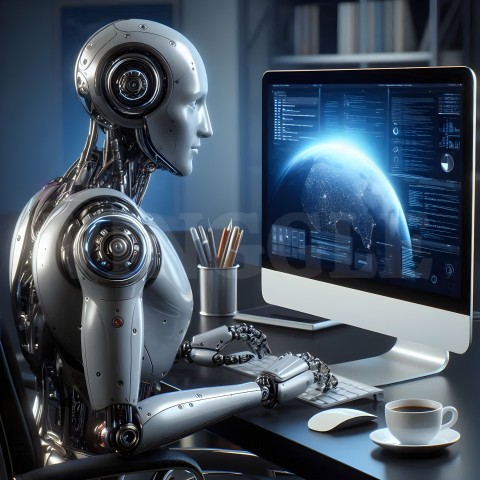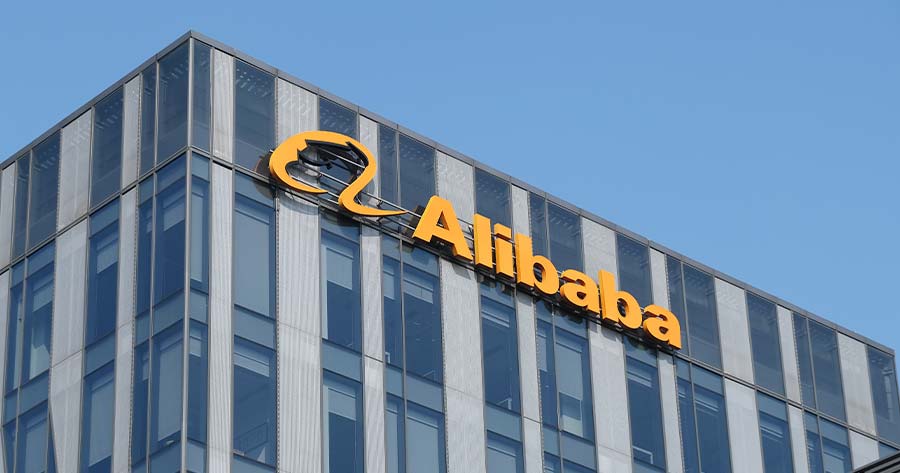Tech
AI-Powered Robots: Big Tech’s Answer to the Global Labor Shortage

AI-powered robots are making waves in Silicon Valley, with industry giants like Tesla, Amazon, Microsoft, and Nvidia investing billions into “humanoid” robots designed to perform human tasks. These robots, typically standing on two legs, are currently used in warehouses but have the potential to work alongside people in homes and offices.
The Visionaries and Their Robots
Tesla’s CEO Elon Musk is a major proponent, touting the Optimus robot as a game-changer that could transform the world even more significantly than Tesla’s cars. Musk envisions Optimus driving Tesla to a $25 trillion market cap, becoming a core part of the company’s long-term value. Similarly, Amazon supports Agility Robotics and has started using its Digit robots in fulfillment centers.
Market Potential and Growth
According to Goldman Sachs, the market for humanoid robots is projected to reach $38 billion over the next two decades. These robots are expected to become essential devices, much like smartphones or electric vehicles, playing crucial roles in manufacturing, dangerous tasks, elderly care, and addressing labor shortages in factories.
Technological Advancements
Humanoid robots have been in development for decades, but recent advances in artificial intelligence have renewed industry optimism. AI technologies, such as those behind OpenAI’s ChatGPT, enable robots to understand language, interpret commands, and make decisions. Equipped with computer vision, these robots are trained in real-world scenarios, enhancing their functionality.
Addressing Labor Shortages
A global labor shortage is fueling interest in humanoid robots. In the U.S., there are approximately 8.5 million job vacancies, with a significant gap in manufacturing, where Goldman Sachs estimates a shortage of 500,000 workers, potentially growing to 2 million by 2030. Robots are seen as ideal for filling monotonous and dangerous jobs.
“We’re starting in what we call the dull, dirty, dangerous tasks, these tasks where we have big labor shortages today, where we don’t have people to do this work,” said Jeff Cardenas, CEO and co-founder of robot startup Apptronik.
Global Competition
China leads the world in industrial robot installations, surpassing Japan in 2013 and now accounting for over half the global total, according to Stanford’s AI Index Report. Tom Andersson, principal analyst at Styleintelligence, noted that China’s market dominance is unparalleled, with only Amazon in the West having comparable capabilities. However, Chinese companies are quickly advancing.
Challenges Ahead
Despite the optimism, several challenges remain. The high cost of these machines and safety concerns about their use in factories are significant hurdles. “When it comes to mass adoption or even something closely resembling mass adoption, I think we’ll have to wait quite a few years. Probably a decade at least,” Andersson said. “Sorry, Musk.”
Tech
Alibaba Opens AI Video Generation Model for Free Use Globally

Chinese tech giant Alibaba has made its latest AI video generation models freely available worldwide, intensifying competition with rivals such as OpenAI.
The company announced on Wednesday that it is open-sourcing four models from its Wan2.1 series, its most advanced AI model capable of generating images and videos from text and image inputs. These models will be accessible via Alibaba Cloud’s Model Scope and Hugging Face, making them available to academics, researchers, and businesses globally.
Following the announcement, Alibaba’s Hong Kong-listed shares surged nearly 5%, continuing a strong rally that has seen the stock gain 66% in 2025. Investors have been optimistic about the company’s growing role in AI and its improving financial performance, buoyed by recent policy signals from Chinese President Xi Jinping supporting the domestic private sector.
Alibaba’s move aligns with a broader trend in China, where companies are increasingly embracing open-source AI. In January, DeepSeek, another Chinese firm, shook global markets by revealing that its AI model was trained at a fraction of the cost of competitors, using less-advanced Nvidia chips. Both Alibaba’s and DeepSeek’s models are open-source, meaning they can be downloaded and modified freely, unlike proprietary AI models such as those developed by OpenAI, which generate direct revenue.
The shift towards open-source AI has sparked debate over whether AI models will become commoditized. While companies like Meta are leading the open-source push in the U.S. with their Llama models, Chinese firms have been particularly aggressive in this space, aiming to drive innovation and build global AI communities.
Tech
VP JD Vance Pledges to Protect U.S. AI and Block Its Weaponization

Vice President JD Vance reaffirmed the U.S. commitment to safeguarding its artificial intelligence and semiconductor technologies, vowing to block efforts by authoritarian regimes to weaponize them.
Speaking at France’s AI Action Summit in Paris, Vance warned that some nations have exploited AI for military intelligence, surveillance, and foreign data manipulation. “This administration will block such efforts, full stop,” he stated. “We will safeguard American AI and chip technologies from theft and misuse, work with our allies and partners to strengthen and extend these protections, and close pathways to adversaries attaining AI capabilities that threaten all of our people.”
While he did not directly name China’s AI model DeepSeek, which has drawn global attention for its competitive performance at a lower cost, Vance criticized heavily subsidized technologies exported by authoritarian states. “We’re all familiar with cheap tech in the marketplace that’s been heavily subsidized and exported by authoritarian regimes,” he said.
In a pointed message to allies, Vance cautioned against collaborating with companies linked to such regimes, arguing it would compromise national security. “Chaining your nation to an authoritarian master that seeks to infiltrate, dig in, and seize your information infrastructure never pays off,” he added.
The U.S. has ramped up efforts to control AI development and chip manufacturing, tightening restrictions on exports to China and strengthening alliances in the tech sector.
Tech
Bitcoin and Ether Plunge as Trump’s Tariffs Spark Global Market Jitters

Cryptocurrencies took a sharp hit after President Donald Trump imposed sweeping tariffs on Canada, Mexico, and China, triggering a global risk-off sentiment among investors.
Bitcoin dropped 2% on Monday to $95,722.77, after trading above $102,000 over the weekend, according to Coin Metrics. Meanwhile, the U.S. dollar index, which typically moves inversely to Bitcoin, climbed by nearly 1%.
The impact was even more severe on other digital assets. Ether (ETH) plunged 12% to around $2,600, down from $3,300 on Friday. The CoinDesk 20 index, a broader measure of the crypto market, sank 16% since Saturday, compared to Bitcoin’s 6% decline.
Shares of crypto-related companies were also affected, with Coinbase and MicroStrategy each losing about 5% in premarket trading.
Market Braces for More Volatility
The sell-off began Saturday evening, just hours after Trump signed an executive order slapping a 25% tariff on imports from Mexico and Canada and a 10% tariff on China. The U.S. conducts about $1.6 trillion in trade with these three countries, raising fears of a potential trade war.
According to James Davies, CEO of Crypto Valley Exchange, traders are unwinding leveraged positions as uncertainty looms. “Bulls are de-leveraging massively right now, watching closely to see if this escalates into a full-blown trade war.”
Bitcoin’s immediate support level is at $90,000, with analysts warning that a break below this level could trigger a steeper pullback to $80,000.
Could Tariffs Boost Bitcoin in the Long Run?
Despite the current market turmoil, some investors believe a prolonged tariff war could benefit Bitcoin in the long run. Jeff Park, Bitwise Asset Management’s head of alpha strategies, argues that an extended trade war could weaken the U.S. dollar and lead to lower interest rates, which might push Bitcoin higher over time.
“While Bitcoin is seen as a hedge against inflation and uncertainty in the long run, it still trades like a risk asset in the short term,” said Geoff Kendrick, an analyst at Standard Chartered. He warned that Bitcoin may experience further volatility this month, especially if economic concerns push investors away from risky assets.
With Bitcoin now about 12% off its all-time high of $109,350 set on Jan. 20, seasoned investors remain watchful. Crypto markets have historically endured corrections of 30% or more during bull markets, meaning that traders are bracing for further turbulence in the days ahead.










